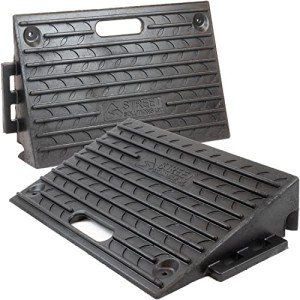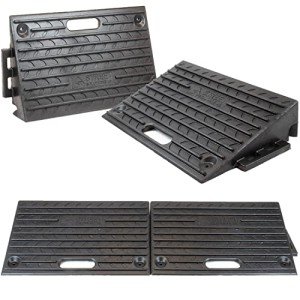In an era where inclusivity and accessibility are paramount, the availability and effectiveness of assistive devices have become critical for enhancing mobility for individuals with disabilities. Among these essential tools are rubber wheelchair ramps, designed to facilitate safe and efficient navigation over varying heights. Specifically, ramps that accommodate height differences between 2.5 cm and 10 cm have garnered significant attention, serving as a practical solution in both residential and public environments.
Understanding Wheelchair Ramps
Wheelchair ramps are inclined planes that provide a seamless transition between surfaces of differing heights. They are vital for individuals using wheelchairs, mobility scooters, or those who have difficulty negotiating stairs. The construction of these ramps must prioritize safety, durability, and ease of use. Rubber ramps, in particular, offer unique advantages, making them an increasingly popular choice.
The Benefits of Rubber Wheelchair Ramps
-
Slip Resistance: One of the most significant benefits of rubber ramps is their slip-resistant surface. Rubber provides excellent traction, minimizing the risk of accidents, especially in wet conditions.
-
Durability: Rubber is known for its strength and resilience. Rubber ramps can withstand heavy foot and wheelchair traffic, making them suitable for both temporary and permanent installations.
-
Flexibility and Ease of Installation: Rubber ramps are generally lightweight and easy to transport, allowing for quick and hassle-free installation in various settings, including homes, businesses, and public spaces.
-
Weather Resistance: Unlike some materials that may degrade over time due to exposure to the elements, rubber ramps are designed to withstand varying weather conditions, maintaining their functionality year-round.
-
Cost-Effective: Compared to more complex ramp systems made from metal or concrete, rubber ramps are often more budget-friendly, providing a practical solution without sacrificing safety and quality.
Ramps for 2.5 cm to 10 cm Heights
When considering ramps for height differences between 2.5 cm and 10 cm, it’s essential to choose the appropriate slope to ensure ease of use. Generally, the ADA (Americans with Disabilities Act) recommends a slope of 1:12 for wheelchairs, meaning for every inch of height, there should be at least 12 inches of ramp length. For example:
- For a height of 2.5 cm (approximately 1 inch): A ramp length of 12 inches (30.48 cm) is recommended.
- For a height of 5 cm (approximately 2 inches): A ramp length of 24 inches (60.96 cm) should be utilized.
- For a height of 10 cm (approximately 4 inches): A minimum ramp length of 48 inches (121.92 cm) is essential.
Many rubber ramps come in modular designs, allowing users to combine sections to easily customize lengths as needed.
Choosing the Right Ramp
When selecting a rubber wheelchair ramp, consider the following factors:
-
Weight Capacity: Ensure the ramp can support the weight of the user and any additional equipment, such as mobility devices or personal belongings.
-
Width: The ramp should be wide enough to accommodate various wheelchair sizes comfortably, typically ranging from 76 cm to 91 cm in width.
-
Portability vs. Permanence: Determine whether you need a portable option for occasional use or a more permanent installation for regular needs.
-
Local Regulations: Familiarize yourself with any local building codes or regulations regarding wheelchair ramps to ensure compliance.
Rubber wheelchair ramps that accommodate heights between 2.5 cm and 10 cm represent a vital resource for enhancing accessibility in various environments. By prioritizing safety, durability, and ease of use, these ramps help create a more inclusive society for individuals with mobility challenges. As we continue to advocate for and implement inclusive practices, the importance of reliable assistive devices like rubber ramps cannot be overstated. By removing barriers and providing solutions, we pave the way for greater involvement and independence for all community members.







